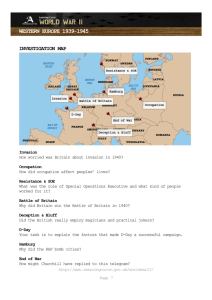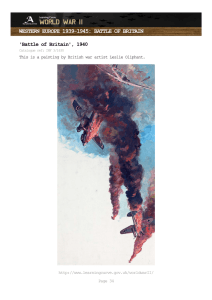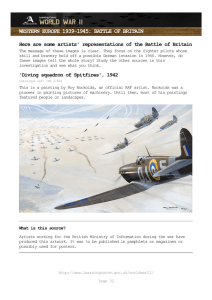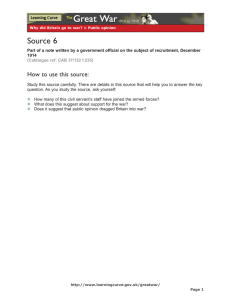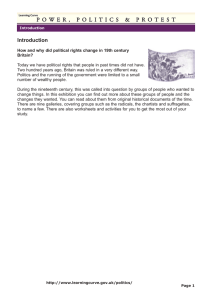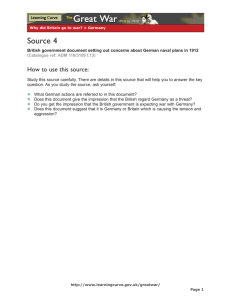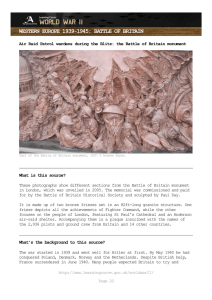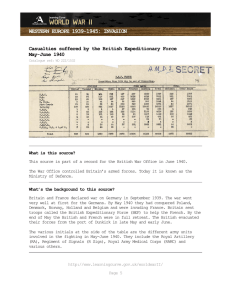WESTERN EUROPE 1939-1945: BATTLE OF BRITAIN 'British Fighter Pilot', date unknown
advertisement
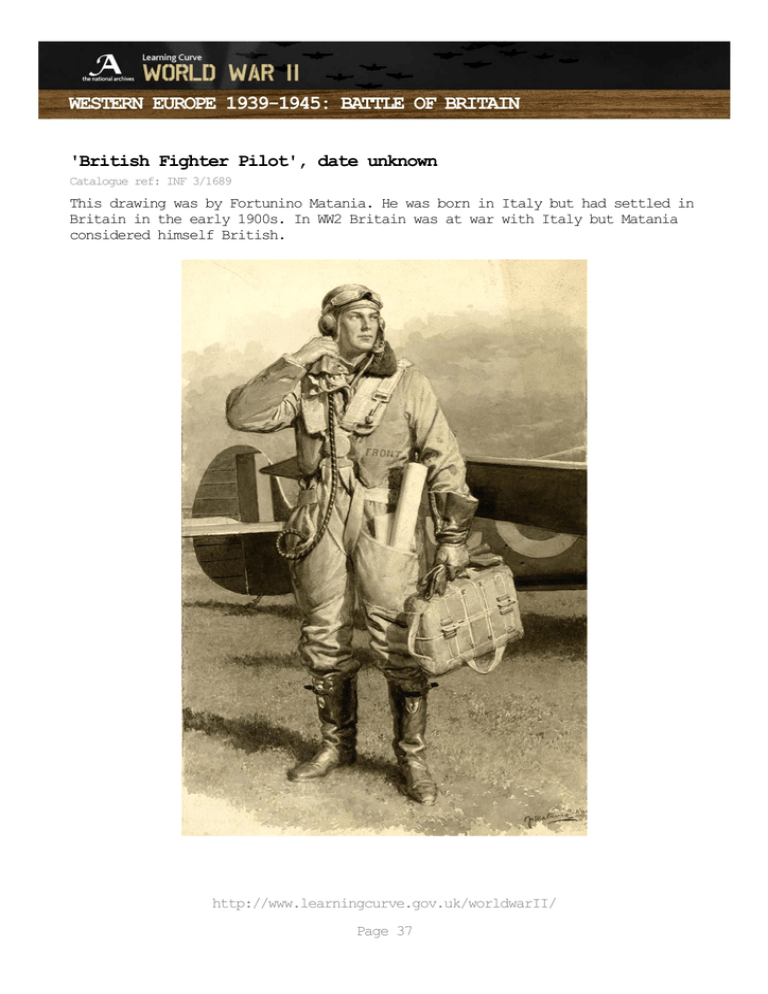
WESTERN EUROPE 1939-1945: BATTLE OF BRITAIN 'British Fighter Pilot', date unknown Catalogue ref: INF 3/1689 This drawing was by Fortunino Matania. He was born in Italy but had settled in Britain in the early 1900s. In WW2 Britain was at war with Italy but Matania considered himself British. http://www.learningcurve.gov.uk/worldwarII/ Page 37 WESTERN EUROPE 1939-1945: BATTLE OF BRITAIN What is this source? Artists working for the British Ministry of Information during the war have produced this artwork. It was to be published in pamphlets or magazines or possibly used for posters. What’s the background to this source? The war started in 1939 and went well for Hitler at first. By May 1940 he had conquered Poland, Denmark, Norway and the Netherlands. Despite British help, France surrendered in June 1940. Many people expected Britain to try and negotiate a settlement, but new British Prime Minister Winston Churchill decided to fight on. The Germans produced serious plans to invade Britain and began major preparations involving something like 35 army divisions (600 000 men). Their problem was crossing the English Channel against the Royal Navy. They thought that they might achieve this if the controlled the air and could attack Royal Navy ships. As a result, the first stage of the German invasion plan, Operation Sealion, was to try and destroy the Royal Air Force. It’s worth knowing that... There is no doubting the skill and bravery on both sides in the Battle of Britain. However, the small number of pilots who defeated the German air force in 1940 has become particularly famous for their exploits. This was probably because the story of these pilots was so dramatic. It made good propaganda for Britain and was a big morale boost for the population. The Battle of Britain was an important development in the war. It was Hitler's first defeat, although it was not a decisive one. The bravery of 'The Few' was also immortalised in a speech by Winston Churchill. An epic feature film promoted the story of these men further in the 1960s that was seen by millions. What conclusions can you draw from this source? 1. Which of the following words could be used to describe this source: heroic; terrible; grim; organised; exciting; dramatic; inspiring; realistic? 2. Try and come up with some of your own words. http://www.learningcurve.gov.uk/worldwarII/ Page 38 WESTERN EUROPE 1939-1945: BATTLE OF BRITAIN 3. This source is not just a picture of a pilot. The say something about this pilot, and all the other impression are we meant to get from this picture? 4. Look at the plan for your TV documentary. o Do you think you will give some time in the the pilots? o How much of the 30 minutes do you think you artist uses techniques to pilots as well. What documentary to the role of will give? Use this storyboard framework to plan your documentary. http://www.learningcurve.gov.uk/worldwarII/ Page 39
